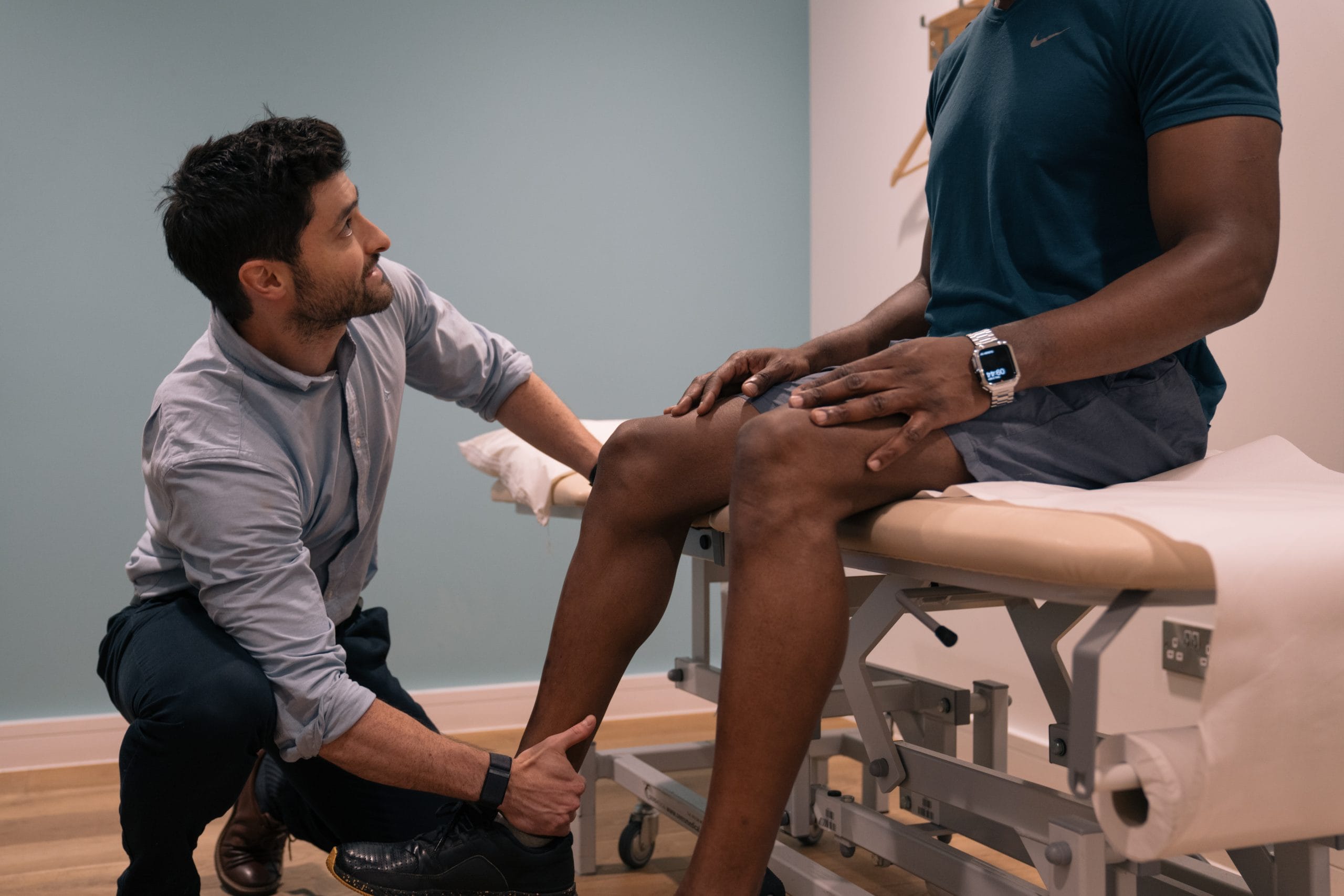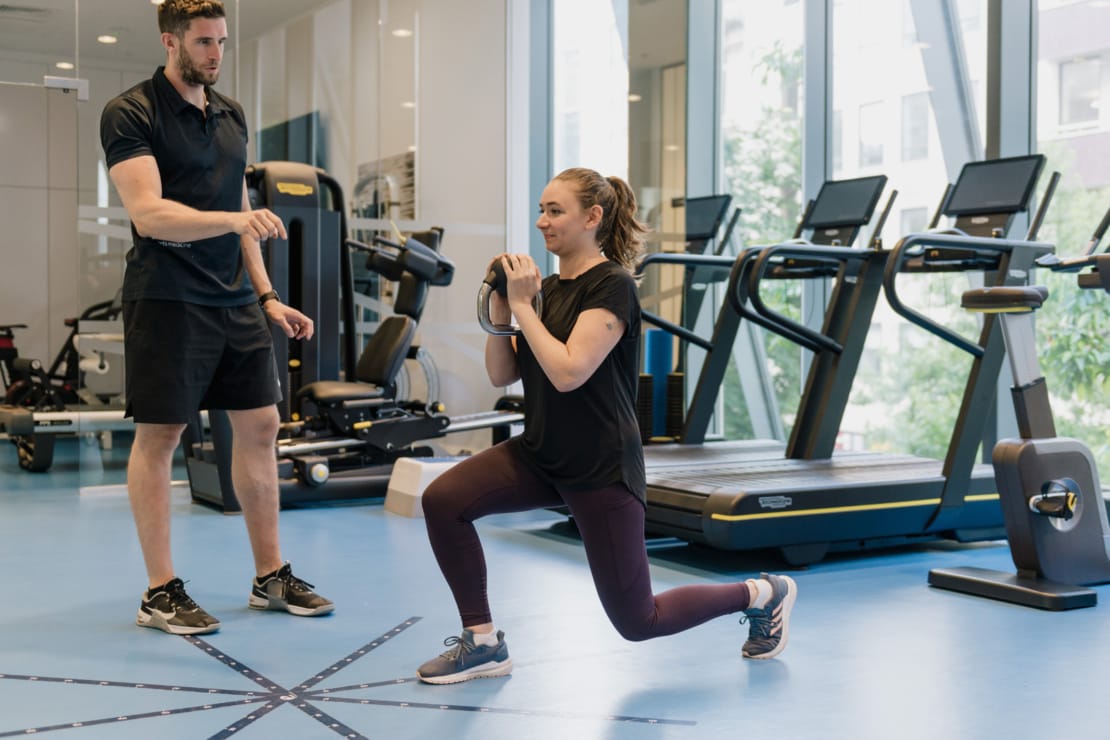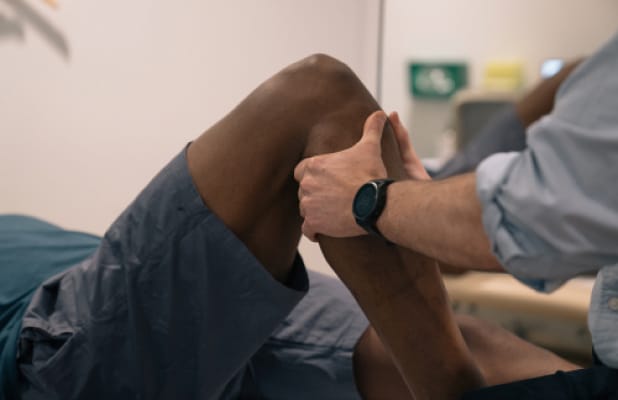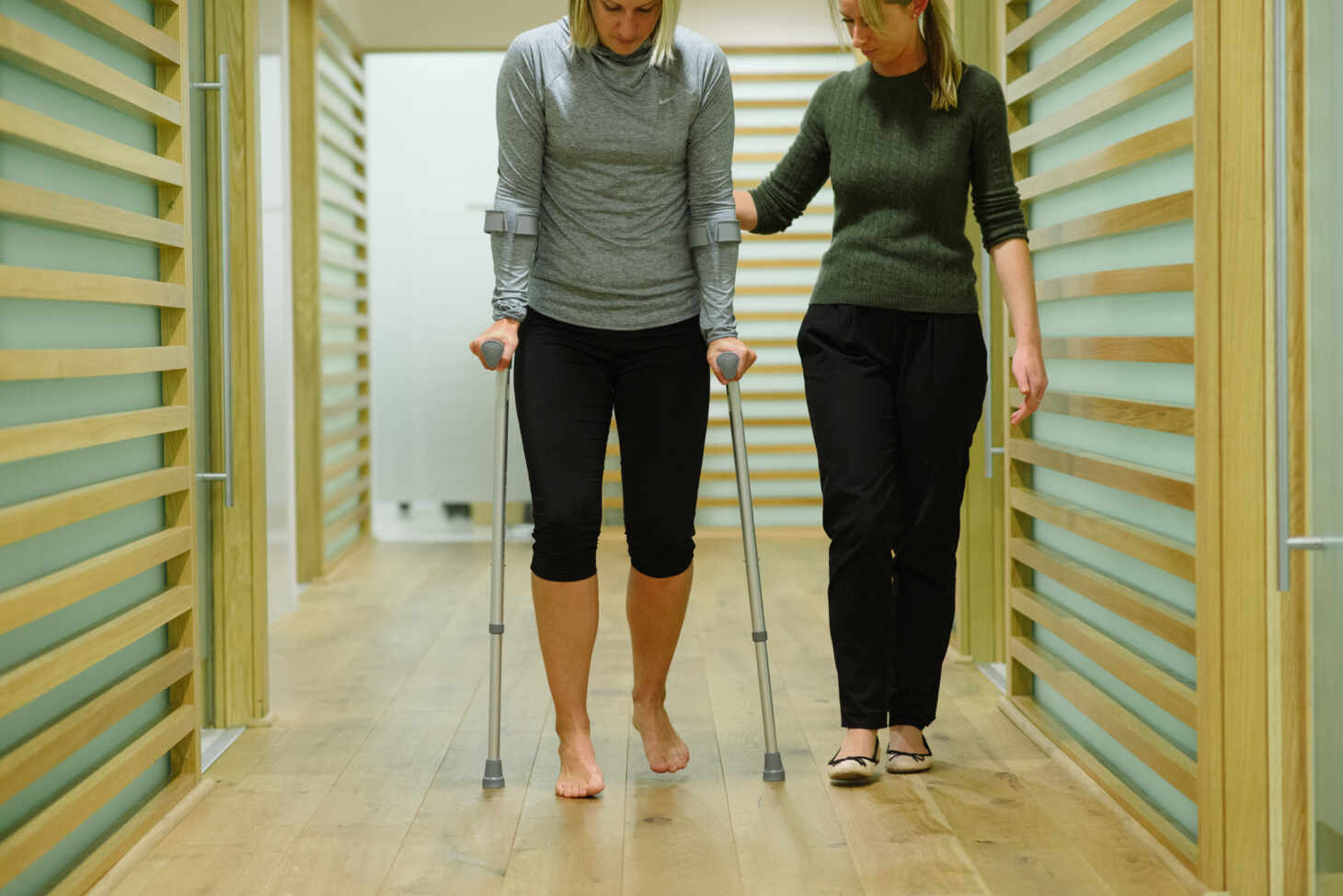Blood Flow Restriction Training to Treat Achilles Ruptures

Pure Sports Medicine
- 18 February, 2023
- Lower Limb
- Rehabilitation
- 4 min read
Heavy resistance training is not safe, or possible, in the early stages of an injury, or post-surgery, so loading to influence hypertrophy is limited. But due to the reduced amount of stress from these lower loads, and the positive effect of causing hypertrophy in the muscles, blood flow restriction training can be a useful tool in accelerating a person’s recovery journey.

It has also been found to take less time to induce hypertrophy in the muscle (3-6 weeks) when compared to traditional resistance training which can take 8-12 weeks (2&3).
Despite there being lots of research relating to BFR and its benefits for post-ACL (anterior cruciate ligament) reconstruction in the knee, there are few studies looking at its effect on rehabilitation following an Achilles rupture; an equally common injury.
Let’s talk about the injury: Achilles Rupture
The Achilles tendon is the strongest tendon in the human body and is comprised of the tendons of both calf muscles: the gastrocnemius (the biggest muscle in the calf) and soleus muscles (a wide, flat muscle that sits slightly deeper than the gastrocnemius) (9).
Tendons transmit force from muscle to bone and therefore play an important part in a someone’s capacity to generate force. During running, the force the Achilles transfers has been reported as being as high as 12.5 times body weight (10).
Despite its strength, the Achilles is the most commonly ruptured tendon in the lower limb (5) and in the United Kingdom statistics show a rupture occurs in more than 11,000 people each year (8).
An Achilles rupture has a significant impact on activities of daily living and typically involves a rehabilitation process of six to twelve months (4). It has also been shown to result in both long and short-term functional deficits, most commonly caused by tendon lengthening and calf muscle atrophy (6). Unfortunately, these deficits occur regardless of whether they are managed operatively or non-operatively (7) and have been found to persist for as long as 10 years post injury.
During the healing process, heavy resistance training isn’t possible. It’s important to give the tendon enough time to heal adequately to withstand some load, otherwise, as with any injury, you can risk recurrence, which only sets you back further. Therefore, loading in order to influence hypertrophy and tendon healing is limited in the early stages of Achilles rupture rehab.
This may sound quite daunting, but this is where blood flow restriction training can come in to play. By using BFR with low loads you can train the area during the healing process with a similar response in the muscle to using much higher loads, ultimately optimising the effects of your early-stage strength work, and potentially positively impacting the long-term outcomes of your treatment.
My Research Plans
I will be completing a pilot study in conjunction with several London-based Orthopaedic Foot and Ankle Consultants to look at the impact of 6-weeks of blood flow restriction training on calf muscle atrophy in the early stages of Achilles rupture rehabilitation.
The exercises included in the rehab programme will be the usual exercises undertaken as part of the post-rupture protocol, with the only difference being the use of the blood flow restriction incorporated twice per week.
I also aim to carry this on beyond completion of my master’s dissertation and hope to publish the results.
If you are interested in participating, or know someone who might benefit from taking part, or if you’d simply like to hear more about this research project, please contact me at [email protected].
References:
- Giles, L., Webster, K. E., McClelland, J., & Cook, J. L. (2017). Quadriceps strengthening with and without blood flow restriction in the treatment of patellofemoral pain: A double-blind randomised trial. British Journal of Sports Medicine, 51(23), 1688-1694
- Tennent, D. J., Hylden, C. M., Johnson, A. E., Burns, T. C., Wilken, J. M., & Owens, J. G. (2017). Blood flow restriction training after knee arthroscopy: A randomized controlled pilot study. Clinical Journal of Sport Medicine, 27(3), 245-252.
- Farup, J., de Paoli, F., Bjerg, K., Riis, S., Ringgard, S., & Vissing, K. (2015). Blood flow restricted and traditional resistance training performed to fatigue produce equal muscle hypertrophy. Scandinavian Journal of Medicine & Science in Sports, 25(6), 754-763.
- Binkley, H. M., Douglass, D., Phillips, K., & Wise, S. L. (2020). Rehabilitation and return to sport after nonsurgical treatment of achilles tendon rupture. Strength and Conditioning Journal, 42(3), 90-99.
- Aufwerber, S., Edman, G., Grävare Silbernagel, K., & Ackermann, P. W. (2020). Changes in tendon elongation and muscle atrophy over time after achilles tendon rupture repair: A prospective cohort study on the effects of early functional mobilization. The American Journal of Sports Medicine, 48(13), 3296-3305.
- Olsson, N., Nilsson-Helander, K., Karlsson, J., Eriksson, B. I., Thomée, R., Faxén, E., Silbernagel, K. G., Sahlgrenska akademin, Institutionen för kliniska vetenskaper, Avdelningen för ortopedi, Institute of Clinical Sciences, Department of Orthopaedics, Göteborgs universitet, Gothenburg University, & Sahlgrenska Academy. (2011). Major functional deficits persist 2 years after acute achilles tendon rupture. Knee Surgery, Sports Traumatology, Arthroscopy : Official Journal of the ESSKA, 19(8), 1385-1393.
- Kearney, R. S., Parsons, N., Underwood, M., & Costa, M. L. (2015). Achilles tendon rupture rehabilitation: A mixed methods investigation of current practice among orthopaedic surgeons in the united kingdom. Bone & Joint Research, 4(4), 65-69.
- Röell, A. E., Timmers, T. K., van der Ven, Denise J.C, & van Olden, G. D. J. (2021). Rehabilitation after surgical repair of acute achilles tendon rupture: Functional outcome with a minimum follow-up of 6 months. The Journal of Foot and Ankle Surgery, 60(3), 482-488.
- Moir, G. (2016). Strength and conditioning: A biomechanical approach. Jones & Bartlett Learning. (10)

Advice
Over the last 20+ years our experts have helped more than 100,000 patients, but we don’t stop there. We also like to share our knowledge and insight to help people lead healthier lives, and here you will find our extensive library of advice on a variety of topics to help you do the same.
OUR ADVICE HUBS See all Advice Hubs

